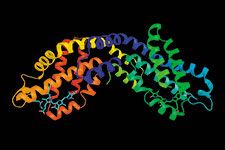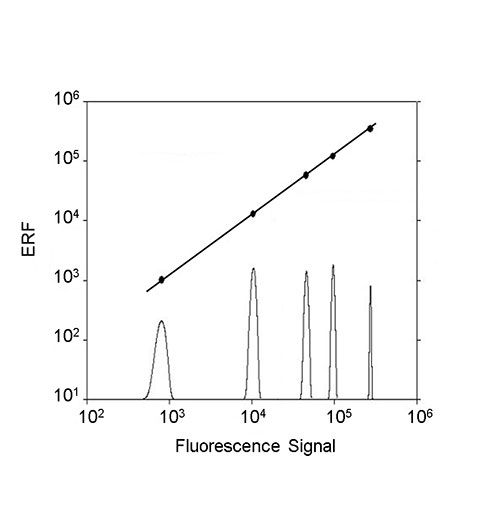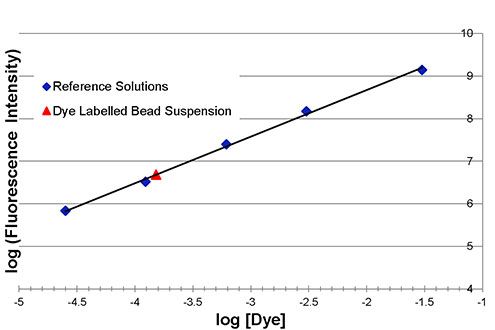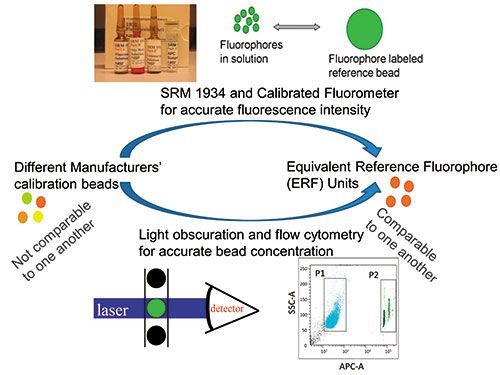NIST Fluorescence-Based Measurement Services
Pharmaceutical Technology's In the Lab eNewsletter
Fluorescence has long been used to detect biological targets. As these measurements are becoming more and more quantitative, standards are needed to ensure accuracy and reproducibility.
ibreakstock/Stock.Adobe.com

Fluorescence has long been used to detect biological targets. As these measurements are becoming more and more quantitative, standards are needed to ensure accuracy and reproducibility.
The National Institute of Standards and Technology (NIST) and the National Institutes of Health (NIH) are leading a flow cytometry quantitation consortium to serve the flow cytometry communities (1). The consortium members are a diverse group, including manufacturers of reagents and instruments, as well as users in industry, government, and academics. The present objective of this group is for NIST to provide fluorescence intensity assignments to reference microspheres submitted by the consortium members. This service assures consistency and traceability of the value assignment and enables the standardization of the fluorescence intensity scale and performance characteristics of flow cytometers.
Antigens on a cell surface or within a cell can be tagged through binding with fluorescently labeled monoclonal antibodies and measured using flow cytometry. Antigen expression level, indicative of the presence of a functional gene, is then measured via the fluorescence intensity of these cell-bound antibodies. In principle, the measured intensity should be directly proportional to the number of antibodies bound per cell (ABC). Moreover, if ABC is determined, the number of antigens on the cell surface can then be calculated using an antibody-antigen binding model that accurately relates the two quantities. Being able to measure antigen expression accurately and correlate it with gene expression level would be a boon to disease diagnostics, drug development, clinical trials, and therapy monitoring, just to name a few high impact areas.
Calibration of fluorescence intensity for flow cytometers
Unfortunately, the issues that complicate this determination are many, leading to large inaccuracies in practice. The most basic one and possibly the most important one to overcome is a fluorescence scale on flow cytometers that changes in magnitude between different cytometer platforms and when different reference microspheres with fluorescence intensities assigned by their respective manufacturers are used. These reference microspheres, or “beads”, over a range of fluorescence intensities are used to calibrate the fluorescence signal of a flow cytometer. The NIST assignment of equivalent reference fluorophore (ERF) units to the mean fluorescence signal, typically referred to as the mean fluorescence intensity (MFI) in flow cytometry, using calibration beads in suspension helps to define the ERF scale. Figure 1 illustrates a calibration curve of ERF units versus fluorescence signal.
Figure 1: Calibration curve of equivalent reference fluorophore (ERF) units versus the fluorescence signal of five reference bead suspensions measured using a flow cytometer [all figures courtesy of the authors].

Determination of ERF units with reference fluorophore solutions
Because every fluorescence detection system produces a different signal intensity for the same sample, reference solutions have commonly been used in flow cytometry and other fluorescence-based techniques (2) to relate the measured fluorescence intensity to the reference fluorophore concentration. A fluorescence spectrometer is used to measure the fluorescence emission spectra of a set of serial-diluted reference solutions with known fluorophore concentrations, producing a calibration curve of the integrated fluorescence intensity versus the concentration of the reference fluorophore (see Figure 2).
Figure 2. Calibration curve of fluorescence intensity of five serial diluted reference solutions measured on a fluorescence spectrometer versus dye concentration. The intensity of one fluorescent bead suspension is also measured, and the curve is used to express it as an equivalent dye concentration.

Standard Reference Material (SRM) 1934, a set of four fluorescent dye solutions covering the spectral range from 440 nm to 800 nm, was released by NIST in May 2016 to enable users to produce such calibration curves with high accuracy using high purity dyes (see Figure 3, top) (3). The SRM solutions were certified for values of concentration and corresponding uncertainty. This was needed because most commercially available fluorescent dyes are supplied with an approximate purity and no estimated uncertainty, making a set of standard dyes necessary.
Figure 3. Schematic of the equivalent reference fluorophore (ERF) assignment process.

The fluorescence emission spectrum of each bead suspension, used for fluorescence intensity calibration of flow cytometers as described in the previous section, is then measured on the same fluorescence spectrometer as that used for the reference solutions with the same measurement conditions. In this way, the fluorescence intensity of each suspension can be expressed in ERF units, as illustrated in Figure 2 by the dye-labeled bead suspension data point on the linear calibration curve. Because of an increasing need for reference fluorophores covering other fluorescence channels in the emission range from 400 nm to 900 nm, we are currently working on three candidate reference fluorophores, Pacific Orange, Alexa Fluor 700, and Alexa Fluor 750 to add to those of SRM 1934. Certain commercial equipment, instruments, or materials are identified in this paper to foster understanding. Such identification does not imply recommendation or endorsement by the National Institute of Standards and Technology, nor does it imply that the materials or equipment identified are necessarily the best available for the purpose.
Determination of bead suspension concentration
Note that the ERF value for the bead suspension shown in Figure 2 is obtained for all beads suspended in a buffer solution. In flow cytometry, individual beads or cells are detected one at a time, so the ERF value per bead needs to be determined (see Figure 3). To calculate this quantity, the concentration of the bead suspension must be determined. NIST has demonstrated the determination of the concentration of spherical bead suspensions using light obscuration see Figure 3 (bottom) (4). This technique counts particles by measuring a decrease in the intensity of laser light when a particle passes through its beam. The values obtained are International System of Units-traceable with an uncertainty of approximately 2% for beads with diameters from 2 micrometers to 5 micrometers.
Additionally, flow cytometry serves as an orthogonal method for bead concentration measurement for enhancing the confidence of the measurement. NIST is working to expand the size range to hundred(s) of nanometers and the present measurement service to include concentration measurement of particles and bioparticles because of the application needs.
Assignment of fluorescence intensity per bead
Figure 3 explains the ERF assignment process of a single bead. (Left) Calibration beads from different manufacturers intended to cover the same fluorescence channels give fluorescence intensities that are not comparable. (Top) SRM 1934 is comprised of three dye solutions (coumarin 30, fluorescein, Nile red) and one suspension of allophycocyanin (APC), covering the emission spectral ranges 440 nm to 550 nm with 405 nm laser excitation, 500 nm to 580 nm and 570 nm to 700 nm with 488 nm laser excitation, and 640-800 nm with 633 nm laser excitation, respectively. These three lasers are most commonly used in flow cytometers.
A calibrated fluorometer and reference solutions produced from SRM 1934 are used to express the fluorescence intensity of a bead suspension as the number of fluorophores in solution with the same intensity under the same instrument conditions. (Bottom) A light obscuration (LO) instrument and a flow cytometer (FC) are both used for counting the number of particles in a suspension. For LO, a decrease in the detector signal is counted as a particle, and the volume that passes through the detection region is also measured. These two quantities enable the particle concentration to be determined. For FC, an increase in fluorescence signal is counted as a particle using flow and optical components that are similar to the LO components shown here. The FC density plot, also shown here, compares the number of calibration beads (P1) to that of an internal standard (P2), allowing an independent determination of the bead concentration. (Right) The combination of fluorescence intensity and bead concentration measurements of a suspension allow an ERF assignment of an average single bead. Calibration beads assigned in this way are comparable to one another, independent of the manufacturer.
Members of the Flow Cytometry Quantitation Consortium can choose to have NIST assign fluorescence intensities to beads using the components of SRM 1934. NIST supplies these assignments through a separate cooperative research and development agreement (CRADA) with members individually, addressing their specific needs. NIST has assigned ERF values to reference beads from several companies and has determined total expanded uncertainties in these values to be between 5% and 13%, depending on the spectral region and type of bead (5). By using these beads and their assigned values, users calibrate their flow cytometers to a traceable fluorescence intensity scale that can then be used to measure ERF values for any fluorescence signal on that instrument.
Antibody quality and characterization
It has been estimated that more than $800 million a year are wasted due to poor quality antibody reagents (6). To address this problem, an NIH-led working group has proposed that reagent and document standards should be developed to determine the quality of reagents and ensure reproducibility in outcomes involving their use (6). NIST is responding to this need by measuring quantitative fluorescence characteristics of antibodies, such as antibody-cell binding kinetics, lifetimes, quantum yields, and corrected spectra, and using these measurement quantities to determine antibody binding characteristics through mathematical modeling. The objective of these measurements is to identify a set of antibody quality parameters that are quantitatively correlated with the different fluorescence intensities measured by flow cytometry for these fluorescently labeled antibodies bound to the same cell-associated antigens. When this correlation is well understood, these antibody parameters may be used as quantitative criteria for determining antibody quality.
NIST will continue to work with stakeholders in the flow cytometry community and other key application areas (e.g., quantitative polymerase chain reaction, enzyme-linked immunosorbent assay, and fluorescence microscopy) where fluorescence detection is important to ensure more reproducible and accurate measurement science for improving the quality of commercial products and services. An ultimate goal of quantitative flow cytometry is to measure the number of antigens or ligand-binding sites associated with a cell through the measurement of ABC (7,8). To have sufficient measurement assurance in flow cytometry, many sources of uncertainty in the measurement process have to be taken into consideration, including cytometer calibration and standardization, antibody quality, cell count and viability, process control materials, and cell population gating, just to name a few. Offering a set of fluorescence-based measurement services is one of the ways NIST is using its expertise to work with stakeholders to improve the measurement confidence in fluorescence-based application fields including, but not limited to, flow cytometry.
References
1. NIST, “Flow Cytometry Quantitation Consortium,” Fed. Regist. 2016; 81(136), 46054-46055 (July 15, 2016).
2. ASTM E 578 -01, “Linearity of Fluorescence Measuring System,” Annual Book of ASTM standards, Vol 03.06 (2001, original version 1983).
3. NIST, Certificate of Analysis, Standard Reference Material 1934, “Fluorescent Dyes for Quantitative Flow Cytometry (Visible Spectral Range)” (2016).
4. D. Ripple and P.C. DeRose, J.Res. NIST,123 -002 (2018).
5. L. Wang, P.C. DeRose, and A.K. Gaigalas, J.Res. NIST, 121, 264-281 (2016).
6. Nature Methods, September 2016, Special Issue on Antibody Reagent Quality.
7. L. Wang, et al., Curr. Protoc. Cytom. 75:1.29.1-1.29.14 (2016).
8. L. Wang, A.K. Gaigalas, and J. Wood, Flow Cytometry Protocols, (Humana Press/Springer, New York, NY, 4th ed., 2018) pp. 93-110.
About the Authors
Paul DeRose and Lili Wang are both senior scientists in the Biosystems and Biomaterials Division at NIST, focusing on developing standards underpinning measurement assurance in flow cytometry.

Transformations in Drug Development for Cell and Gene Therapies
March 28th 2025As a recognized leader in immunophenotyping for clinical trials, Kevin Lang from PPD discusses how spectral flow cytometry is transforming drug development, particularly in cell and gene therapies like CAR-T. He also dives into his award-winning research, including his 2024 WRIB Poster Award-winning work, and his insights from presenting at AAPS PharmSci360.
Advancing Clinical Trials with Spectral Flow Cytometry: A Conversation with Kevin Lang
March 28th 2025As a recognized leader in immunophenotyping for clinical trials, Kevin Lang from PPD discusses how spectral flow cytometry is transforming drug development, particularly in cell and gene therapies like CAR-T. He also dives into his award-winning research, including his 2024 WRIB Poster Award-winning work, and his insights from presenting at AAPS PharmSci360.